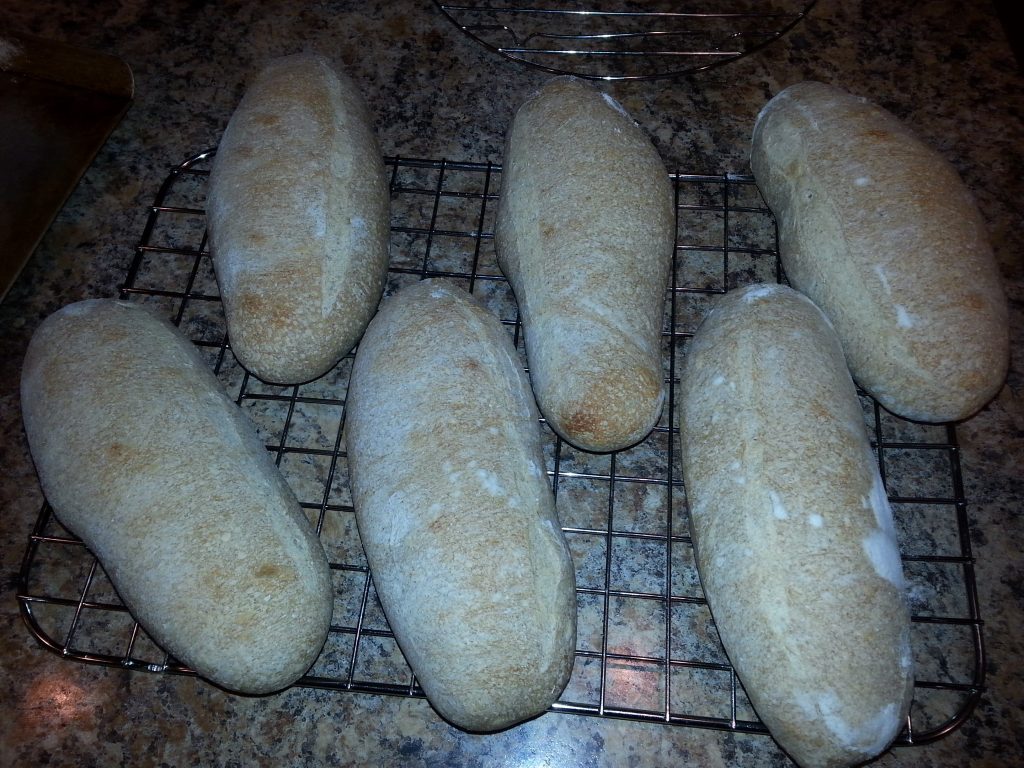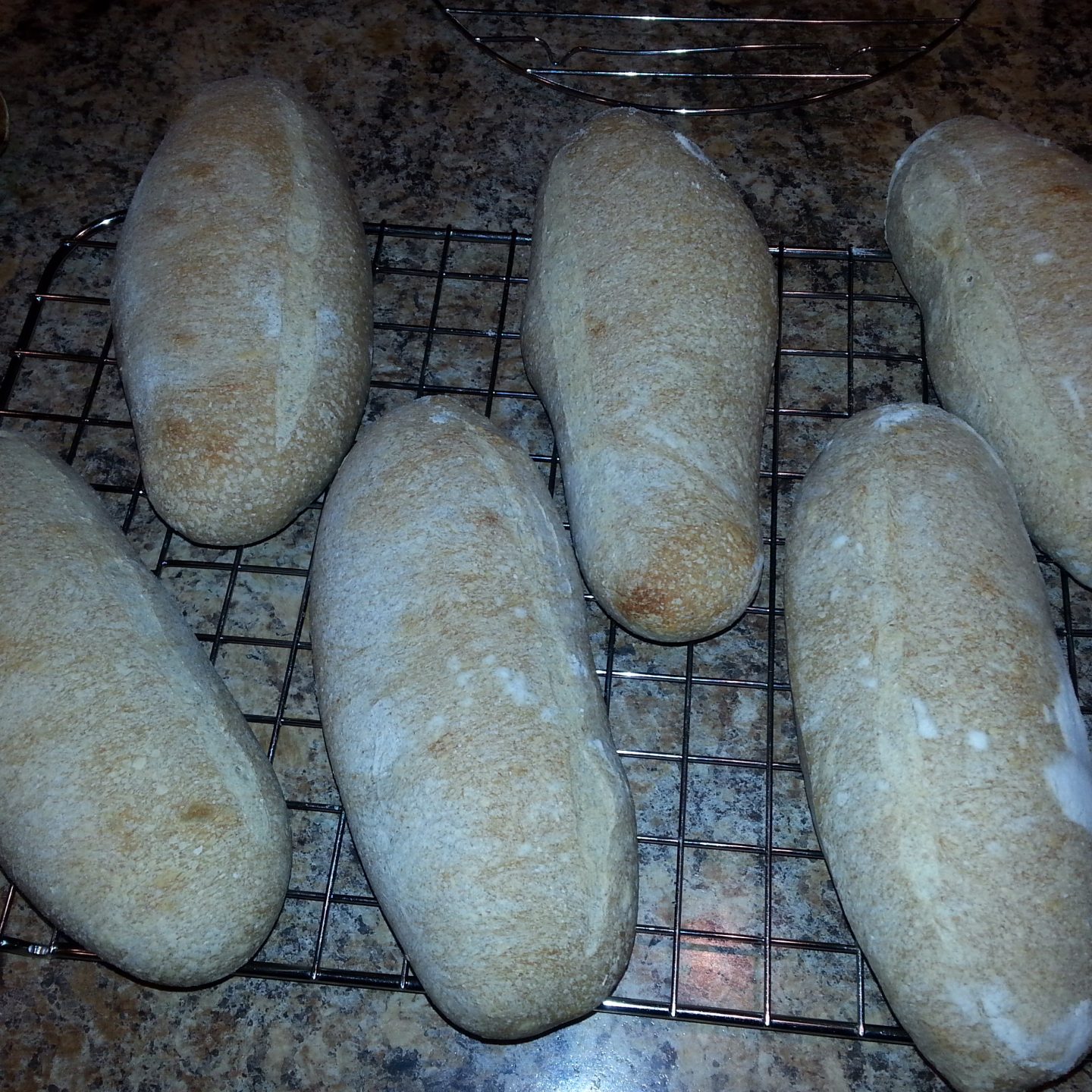Sourdough starter is pretty easy to make. Mix flour and water, wait, then add some more flour and water, then (wait, remove half, add more flour and water) repeatedly until it’s good.
Starter Recipe
Contents
The recipe always involves adding equal parts (by weight) of water and flour, but you do it many times.
- 25 mL (grams) room temperature water
- 25 grams flour (I use strong white flour)
Mix together until smooth. Then, for about a week, reduce to 50 grams (discarding as needed — I collect the excess in a container and add it to another bread recipe so I don’t waste it) and add
- 25 mL (grams) room temperature water
- 25 grams flour
Mix together until smooth.
Within a week you’ll probably start seeing bubbles in the starter and picking up some smells. Within two weeks you’ll probably have a more or less stable starter and be ready to make bread.
Starter Smells
Regarding the smells… ultimately you want a faint to moderate vinegar smell. On the way there you might get a beery smell, which I take as a very good sign.
But trust me on this and learn from my experience: “smells like beer and bubbly like beer” does not mean “will taste like beer”. Mnahhh….
You might also get something of a cheesy smell. This is not a problem!
Well, you don’t want to use it yet, but it’s a common thing, especially when creating a new starter. The pH level has not yet dropped low enough that only the desired cultures are present, and other, unwanted cultures are there. Mostly like there are lactobacilli present, they can produce that sort of smell.
The last time I created a new starter I just waited it out, kept discarding and feeding the starter until the Good Stuff won and the lactobacilli were no longer present — or not enough to matter.
You can also help things along by increasing the acidity of the starter. Many people recommend a small amount of pineapple juice. This helps bring the pH down without risking killing the cultures you’re trying to develop (as, say, acetic acid — vinegar — might). I haven’t tried this myself, but the amount of juice needed is small enough that you’re not going to end up with ‘pineapple-flavored’ bread.
Starter Volume
Unless you’re making quite a large batch of bread, or many batches in a short period, you will likely never need a lot of starter. I have one in the fridge that is perhaps a quarter cup when sleeping. I take a spoon and stir it, removing as much as easily comes out, feed it 25 mL of water and 25 grams of flour and leave it overnight, then use half of it before feeding it and putting it back in the fridge until needed again.
I regularly use about 5% starter (25 grams starter to 500 grams flour) when I make sourdough bread. The yeast is slower than most prepared yeasts, but it is strong, and you can get a lot of bread out of a small amount.
If I was planning a large amount of sourdough bread I might feed my starter about 150 grams of water and 150 grams of flour, 24 hours earlier… then use up all but about 25-40 grams of starter, feed it, and put it back to sleep.
Having a large amount of starter just means having to feed it more, and probably discard more over time. I keep it small and don’t have to discard much.
Discarding Starter
Even when I discard starter, I don’t throw it away. There are sourdough recipes for things other than bread (I’ve had sourdough cakes and sourdough pancakes), but I don’t bother. I collect the discarded sourdough and include it when I make other bread. It doesn’t really change much, to be honest, but means I’m not just throwing away the unneeded starter.


Pingback: Sourdough Bread, 2018-12-31 – KJDavies